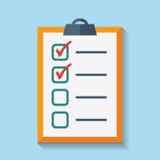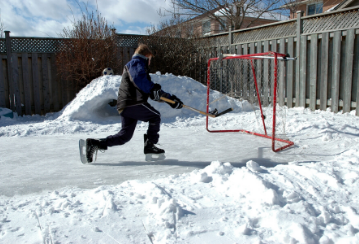News and Updates
Planning to build a backyard ice rink? Skate smoothly with these safety tips
Building a backyard rink can provide hours of winter fun for you, your family and friends. Whether you’re teaching your son to skate, lacing up for some after-work exercise or teaching your daughter how to perfect her slapshot, a backyard ice rink will help you make the most of the winter months. But building a winter rink also comes with the responsibility of maintaining it and watching out for safety hazards. Here are a few tips to keep your family and friends safe on the ice.
Build it right
Taking shortcuts when building your backyard ice rink can result in flooding and rough ice. You’ll want to ensure you’re building your rink correctly to avoid property damage or injuries. If you’re not experienced with building rinks, it may be best to hire a professional to build one.
To prevent leaks, don’t do anything that could create holes in your liner, like walking on it or dragging it across cement floors. Even if your liner doesn’t leak, the ice will melt in the spring so make sure that the water will drain away from your house and not into the basement.
When you fill the rink, don’t just turn on the hose and walk away—keep a close eye on it to prevent flooding or damage. And don’t forget to turn off the water flow to outside taps after you’re done filling up your rink to prevent frozen pipes!
Take care of your ice
Rough ice is an accident waiting to happen. Keep your ice smooth to avoid any injuries that can come with a bad fall.
Regularly flood your rink with a layer of water—an ice resurfacer and a thin layer of hot water will help you create a smooth surface. The ideal temperature to flood your ice is between -7 and -20 degrees Celsius. If you try to flood your rink when it’s below -20 degrees, the ice will be brittle and freeze before it has a chance to level out. Before you flood, be sure to clear off any debris such as leaves or sticks to avoid creating bumps. Snow is also an ice-killer; make sure to clear snow off the ice immediately, as it will stick and create a rough surface.
If you end up with a large crack or hole in your ice, you can repair it by filling it with a mixture of snow and water (slush) and smoothing it over before you flood the rink.
Safety first
Although your kids are skating close to home, an adult should always supervise them on the ice. Skaters should never skate alone, or without adult supervision, and they should dress appropriately for the weather to prevent frostbite.
Safety gear is also necessary—all skaters should wear helmets approved by the Canadian Standards Association (CSA) that fit properly and are in good condition. If skaters are playing hockey, hockey padding is a must.
Light it up
With the short days of winter, you’ll get the most out of your rink if you put up lights to keep visibility high, even after sunset. Be aware that extension cords can become an electrical and tripping hazard. Be sure to use insulated winter extension cords that remain flexible and protect against moisture, even when the temperature drops.
To prevent an electrical shock, make sure that any extension cords are kept far away from skates and shovels. If there’s an ice storm or heavy snowfall, consider bringing the extension cords inside to prevent damage.
Do your research
Not only should you research how to properly build an ice rink on your property, you should also check your local bylaws and home insurance policy.
Some towns have restrictions on where you can place your rink, how long it can be up, or even how its constructed or maintained. Check with your town’s zoning department and secure any permits that are required before you start building your rink.
Your home insurance policy may cover accidents or property damage caused by your backyard rink. Check the limits on your policy, and find out what is covered for you, your family, and any visitors who might be using your rink.
To review your current home insurance policy and discuss coverage options, contact an OTIP insurance broker at 1-866-561-5559.







